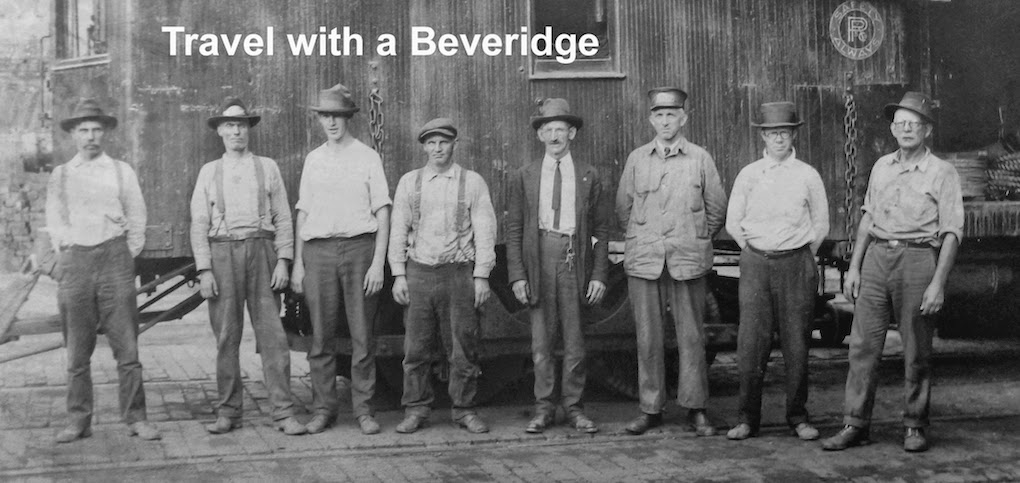
Amanda Gillooly, a blogger at Couch Potatoes, finds inspiration from her late grandfather's belongings:
When my Pap died I never cried. Not at the viewing, where he looked ravaged by the Alzheimer’s Disease that slowly stole his personality, his memory and his independence. I thought he’d want to me to be strong.
James W. Crowe died Sept. 27, 2004 in The Masonic Village in Sewickley from complications from a long and courageous battle with the disease. Despite it all, he never forgot what was important to him. He never forgot my name.
I held back the tears through the funeral, and choked back more when I delivered one of his favorite Bible verses and then a eulogy I had written. Of all my writing assignments, I had never encountered one quite that daunting.
How do you describe a person who you knew somehow better than anyone else in the world, and who, perhaps, loved you more than any other one person? How do you pay homage to a person who -- always, always -- loved and believed you?
I did it by telling everyone about the Pap that I knew, the man who would get all dolled up to drop off mail at the post office, but would walk around the house in July wearing Bermuda shorts paired with black socks and sandals. Because of the heat, he would often forego a shirt, but still wear the requisite suspenders. James W. Crowe wasn’t one to “bust a sag” as they say.
I shared many Pap-isms. He had a healthy dislike for ethnic foods. He believed the cure to all life’s ills was a good bowel movement. I told everyone that, despite his snappy appearance, he always seemed to forget to insert his bridgework, revealing a big toothless smile.
What I didn’t say, what I couldn’t say, is how much more there was to him than anyone – his wife, his children, his colleagues and friends – detected. If I had the heart, I would have told everyone he changed my life. I would have told them he was my hero. I would have told them that any success I had in my young life could be directly attributed to him.
I had a difficult childhood, as I guess many of us do. I never told anyone about the horrors of home life, just prayed for Friday to come so I could visit Gram and Pappy, and maybe help him file some of the paperwork he handled for the Masons or Oddfellows, two fraternal organizations where he served as secretary.
We never talked much about the serious things in life. There really were never heart-to-heart conversations. He wasn’t in the habit of giving advice. But he always seemed to know when I was at my breaking point. Surely, he knew there was something wrong at home.
One Sunday my senior year of high school, I was broken. With no money for college, and thinking there was little hope for my future, I had made my decision: I was going to kill myself.
Pap was driving me home, and was stopped at a traffic light while I thought about how I would pull off the act. In the silence of his Ford Taurus, without ever taking his eyes from the road, said, “Keep your chin up.”
It was the only advice he ever gave me. And it was all he had to.
From those four words, I knew Pap was an optimist. I knew he believed in “keeping on keeping on” and he never, not once in his long life, ever gave up. In anything, or anyone he believed in.
I looked through some long-forgotten boxes on Saturday in his basement office and found a few clippings and mementos I’m sure he never thought would be discovered. And when I read them I cried.
I cried for the fact he was gone. I cried because I knew there was a side of him that agreed with the great Ghandi: You must be the change you wish to be in the world.
One newspaper clipping said, “The world has takers and givers – takers eat better; givers sleep better.”
I cried when I uncovered it. That was totally him. I remember retrieving the daily newspaper for an elderly neighbor. As a small child, the dollar the gentleman handed me could have been a $1 million check. But Pap always looked down at me and shook his head, telling me gently to give the dollar back.
“You don’t do it for the money. You do it because it’s the right thing to do,” he would say time and again.
In one of the boxes, I also found a small pocket book with a weathered card titled “The Optimist Creed.”
I bawled when I read it, and can only hope that one day I can make him proud by keeping this creed in mind always.
It read:
Promise Yourself…
To be so strong that nothing can disturb your peace of mind.
To talk health, happiness and prosperity to every person you meet.
To make all your friends feel that there is something in them.
To look at the sunny side of everything and make your optimism come true.
To think only of the best, to work only for the best and expect only the best.
To be just as enthusiastic about the success of others as you are your own.
To forget the mistakes of the past and press on to the greater achievements of the future.
To wear a cheerful countenance at all times and give every living creature you meet a smile.
To give so much time to the improvement of yourself that you have not time to criticize others.
To be too large for worry, too noble for anger, too strong for fear, and too happy to permit the presence of trouble.
(It was attributed only to the Reynoldsburg Optimist Club)






















